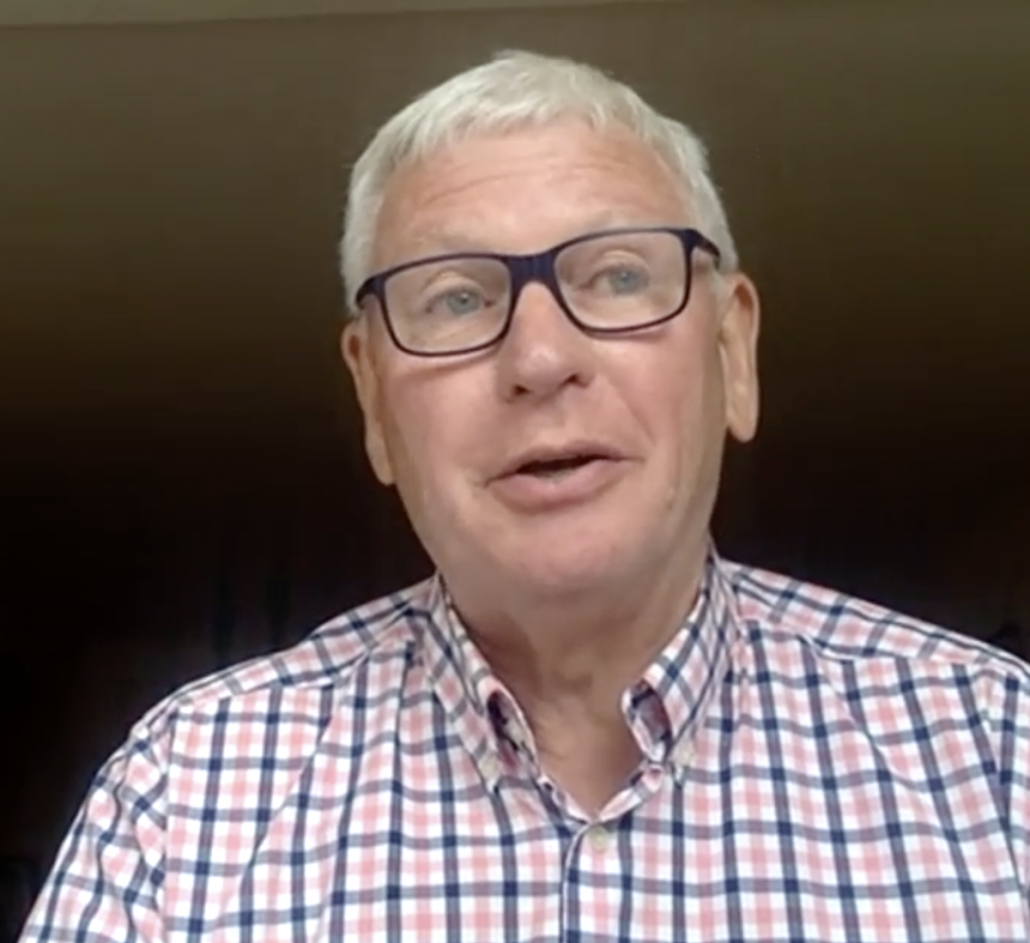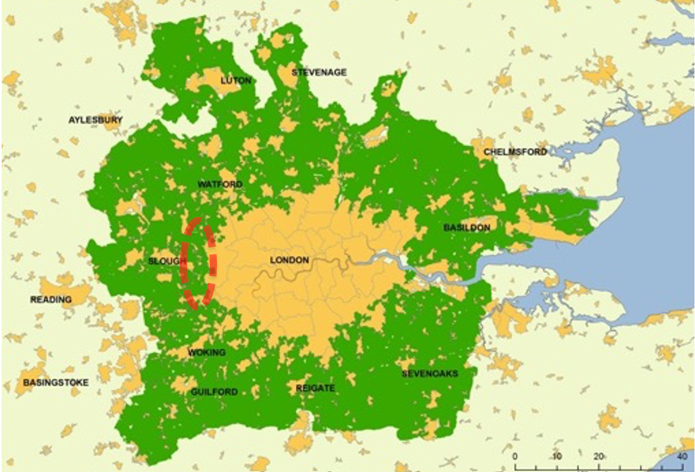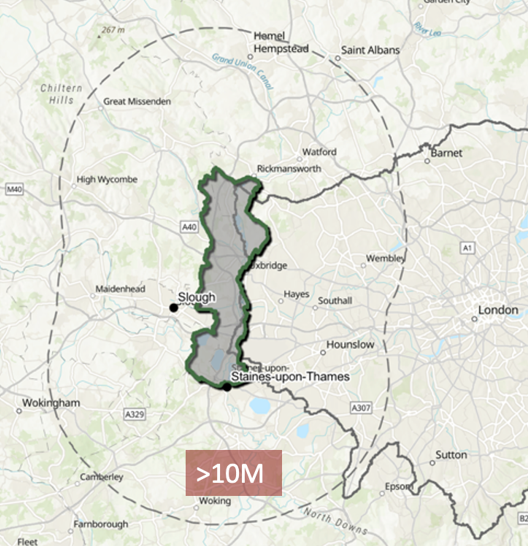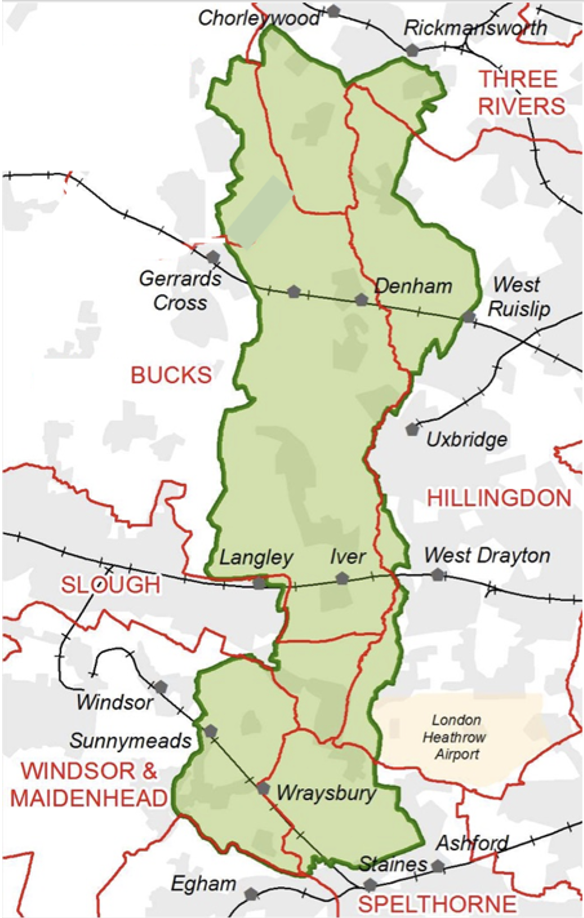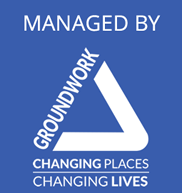JERRY UNSWORTH is an independent planning consultant advising the Colne Valley Regional Park on a wide range of matters, including mitigation for Heathrow expansion and HS2. He has spent almost five decades working on every aspect of planning, performing a variety of roles for five city and district councils, notably Head of Planning & Sustainability for Wycombe District Council, now part of the new unitary authority, Buckinghamshire Council. Here, he makes the case for genuine joined-up thinking when it comes to planning on the urban fringe.
The Colne Valley Regional Park faces uniquely intense development pressure.
Sitting immediately to the west of London, it is inner Green Belt and straddles several different local authorities. Most people assume this Green Belt status means it should be protected from development. The reality is not that simple.
Local Communities across the Park from Rickmansworth to Staines are experiencing unprecedented fragmentation of their natural environment, and this has intensified dramatically in the last five years or so. And it’s getting worse.
The London Green Belt is shown in green and the CVRP occupies a large area on its inner part adjacent to the western edge of the capital.
10 million people live within 15 kilometres.
The bald fact is that councils and government have no overview of what is happening across the Regional Park, and it is no exaggeration to say the threats now facing it have become existential.
When it comes to planning, the area now needs to be seen as a whole, extending collective thinking across local authority boundaries. Looking at the big picture, rather than continuing to plough narrow, site-specific or parochial furrows.
When the CVRP was established in 1965, the local authorities had a vision, principally concerned with promoting recreation, wildlife and farming. The area maintained its character for decades, but in the last ten years things have noticeably changed.
There are various factors at play, but the abolition of plan-making and co-ordination at a regional level, with councils told to just plan within their own boundaries, has undoubtedly contributed to the crisis we now face.
The system has failed.
More recently still, a plethora of development proposals has emerged. Some big ones have been approved, despite being in the Green Belt.
The problem is that each proposal tends to be looked at in isolation. Without a plan to get the most out of this ‘inner’ part of the Green Belt, opportunities to improve connectivity and foster longer distance walking and cycling routes, and wildlife corridors, are being missed.
Better connectivity is essential if people from urban areas are to be able to access this first taste of countryside more easily.
If approval for development has to be granted, surely we must also see corresponding benefits for how that area of countryside functions?
In my view, the nine local authorities overseeing the CVRP need to create an overall vision – a masterplan – specifically for the CVRP. Genuinely joined-up thinking, with each development that Councils approve leading to incremental countryside improvement and better connectivity for people and wildlife, not incremental worsening of our local countryside.
In 2019 a Colne and Crane Valleys Green Infrastructure Strategy was agreed to act as a thought-through blueprint. It provides an excellent starting point for councils to embrace in their own plans. Doing nothing is not an option: we must see an end to piecemeal development in the CVRP.
Whilst the CVRP has some fantastic country parks and nature reserves, too often the landscape and paths between these gems (and from urban areas generally) are very poor and many are getting worse.
This seems to be particularly the case around Heathrow. The factors causing this are beyond the CVRP’s control – problems such as lack of funding for planning enforcement, illegal dumping, scarce resources for maintaining rights of way, and some landowners deliberately degrading sites in the hope of getting permission for a development which could ‘improve’ the landscape. This is known as ‘planning by dereliction’.
Unfortunately, the Green Belt on the edge of the capital is increasingly seen as a soft touch by those with development aspirations.
I commend the CVRP’s campaign Your Countryside in Crisis – a Call for Action. It suggests a constructive way ahead with well-considered solutions, including for national reform of planning. The time is right.
Better connectivity should be a key objective:
- For wildlife – with joined-up corridors and richer biodiversity that actively help nature.
- For people – with excellent walking and cycling routes giving access across the countryside
- For our river systems – the Colne is fed by the Chiltern chalk streams, but all these watercourses experience horrendous pollution incidents. If Heathrow expansion goes ahead, natural links between the internationally-rare chalk streams and the Thames would be severed and 10,000 years’ freedom of movement along them by Eels, Otters and other species lost forever.
- For combating climate change – offering a substantial ‘green lung’ for climate resilience, carbon off-setting and a cool, green and blue retreat from the urban heat
- For local food production and greater food security
If our communities have to accept so much development ‘in the national interest’, or because of ‘very special circumstances’, then why is their remaining countryside not the best looked-after in the UK?
It is time for urgent, full scale Joined Up Thinking. Otherwise, we will sleepwalk into losing what this stretch of countryside can offer future generations, right on the doorstep of our capital city.
Further Reading
Your Countryside in Crisis – A Call for Action!
A briefing note for MPS, Local Authorities, Planning Officers, Councillors etc.
Map showing proposed developments in the Colne Valley Regional Park, February 2024
Green Infrastructure Strategy – Colne and Crane Valleys
Crunch time for the Colne Valley Park – why we simply have to save this precious landscape
We have created a story board which makes the case for the protection of the Colne Valley Regional Park and why this is so urgent. Scroll down to play.
